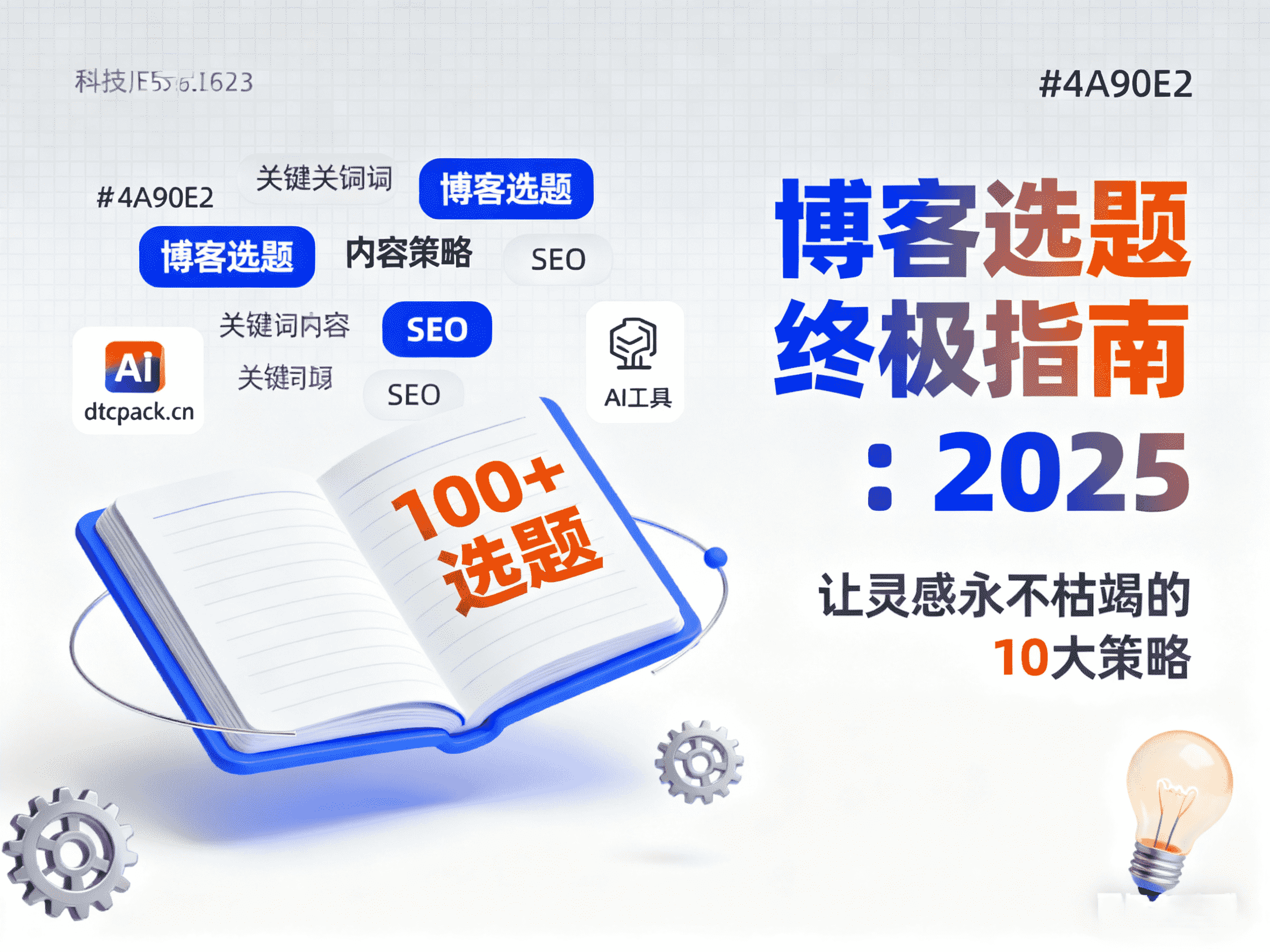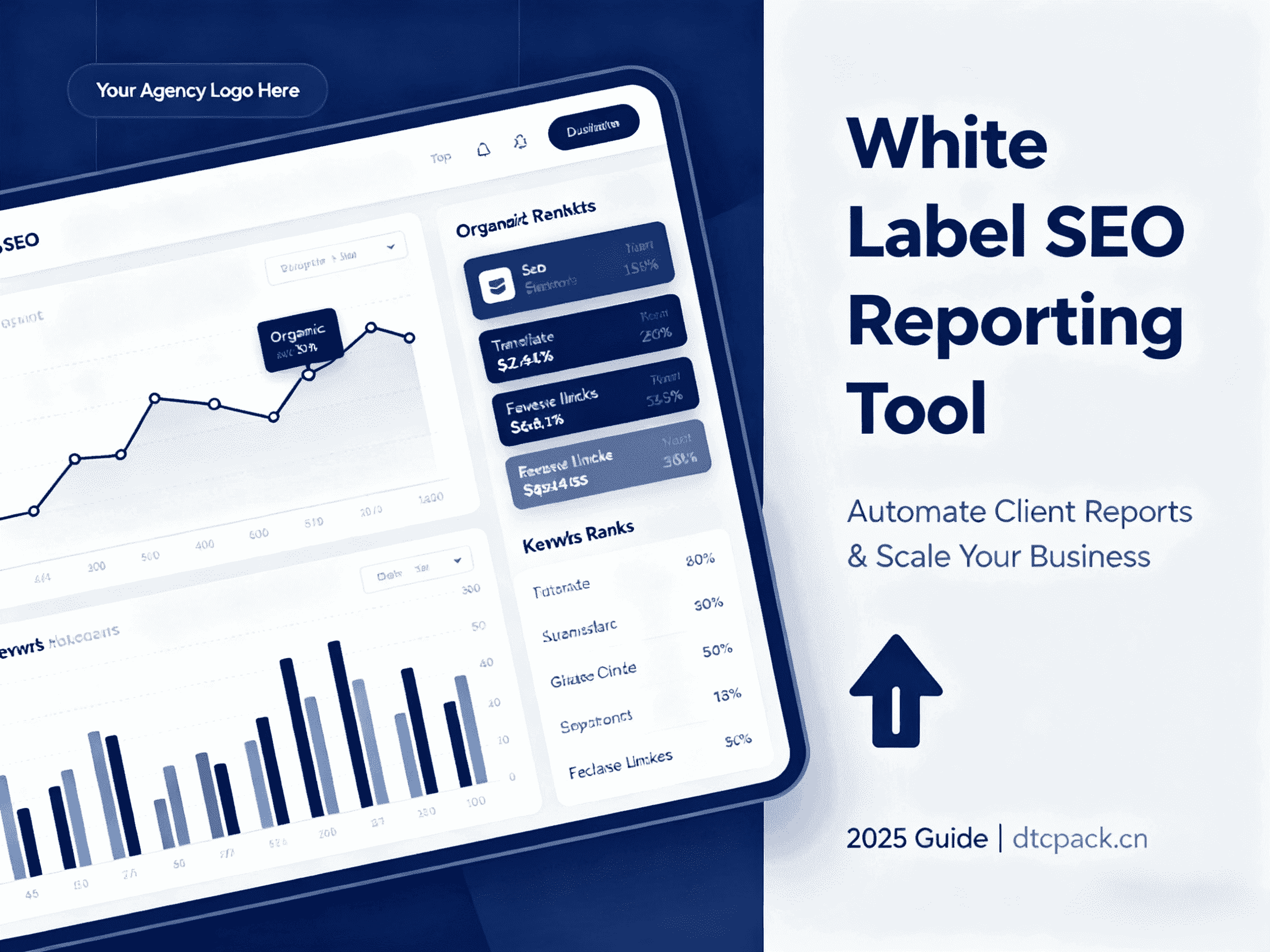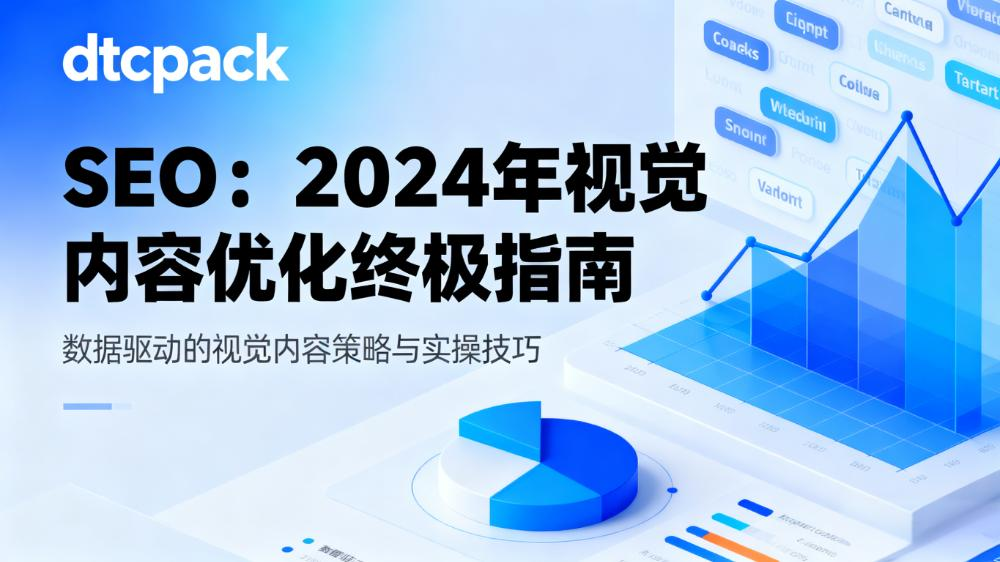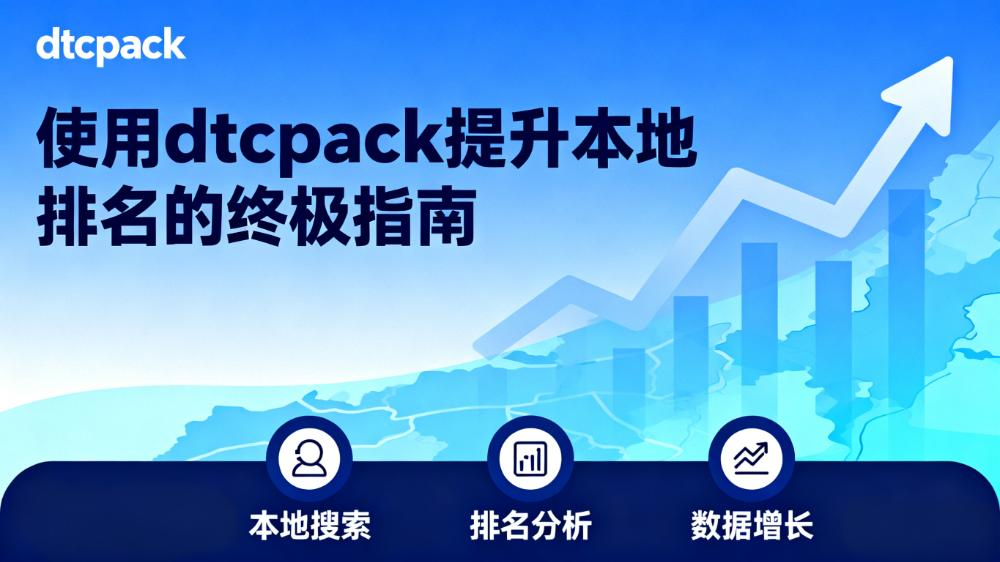Executive Summary
In the rising tide of global e-commerce, merely exporting products is no longer sufficient to build a sustainable competitive moat. The victors of the future will be the brands that can transcend cultural divides and forge deep emotional connections with consumers worldwide through content. This white paper aims to systematically deconstruct the core topic of "Cross-Border E-commerce Content Strategy." We not only provide a deep dive into its evolution—from cultural adaptation to technology-driven execution—but also offer a practical, AI-powered playbook that is ready to be implemented. The purpose of this document is to help business leaders and marketing teams transform content from a cost center into a core engine driving global growth, with DTCPack serving as the key technology partner in this transformation.
Market Data Introduction
The global cross-border e-commerce market is expanding at an unprecedented rate. According to Statista (2023), the global cross-border B2C e-commerce market is projected to grow from approximately
785 billion in 2022 toastaggering∗∗785billionin2022toastaggering∗∗
7.9 trillion by 2030**. Behind this exponential growth are hundreds of millions of consumers eager to connect with global brands. However, 90% of online shoppers prefer to browse websites in their native language, and over 65% of non-native English speakers prefer to consume content in their own language, even if the quality is slightly lower (Source: CSA Research). This data reveals a stark reality: the most formidable barriers standing in front of this trillion-dollar market are language and culture.
The Strategic Role of Content: Building Your Global Brand Embassy
If your cross-border DTC store is your "commercial outpost" in the global market, then your content strategy is the act of establishing fully functional "Brand Embassies." A great embassy not only speaks the local language but also understands local etiquette, customs, and values. It is more than just a place for transactions; it is a cultural exchange hub, a strategic stronghold for building trust, conveying the brand spirit, and cultivating loyal "citizens" (i.e., brand advocates). Neglecting content is like dispatching an ambassador who is ignorant of diplomatic protocols and fluent in no local languages—the inevitable result is rejection and oblivion in the target market. Conversely, a meticulously constructed content ecosystem allows your brand to earn respect, understanding, and long-term commercial success in a foreign land.
A. The What & The Why - Deep Dive
1.1 Beyond Translation: Redefining Cross-Border Content in Three Core Dimensions
Successful cross-border content is far more than language conversion; it is a systematic undertaking involving culture, technology, and commerce. We must re-examine it through the following three dimensions:
This is not just language localization but a comprehensive alignment with the target market's culture, values, taboos, sense of humor, and aesthetic preferences. It demands that content resonates with local consumers on an emotional and psychological level. A single minor cultural misstep can lead to catastrophic consequences for a brand's image.
Case in Point (Negative): In 2018, the Italian luxury brand Dolce & Gabbana released a series of ad videos titled "Eating with Chopsticks," featuring a Chinese model awkwardly eating Italian pasta with chopsticks. The ads were widely perceived by Chinese consumers as culturally arrogant and stereotypical, sparking a massive boycott that led to the cancellation of their major Shanghai fashion show. The brand's image in China has yet to fully recover, making it a textbook example of cultural adaptation failure.
Case in Point (Positive): When Airbnb entered the Chinese market, it not only changed its brand name to the more culturally resonant "爱彼迎" (Aibiying, meaning "welcome each other with love") but also tailored its content heavily around local scenarios like Chinese family travel habits and Spring Festival reunions. This successfully integrated a Western-born sharing economy concept into the Chinese cultural context.
Users will not search for your product using the keywords you are familiar with. They will use local slang, acronyms, and specific product descriptions. Therefore, SEO localization is not just about translating keywords; it's about using tools and local insights to uncover the actual search terms and query intents of the target market. This includes localized metadata, URL structures, internal linking strategies, and even considering the unique algorithms of dominant local search engines (like Naver in South Korea or Yandex in Russia).
Case in Point (Negative): An American outdoor gear brand entering the German market directly translated its flagship "Backpack" to "Rucksack." While accurate, they overlooked that German hiking enthusiasts more commonly search for specific long-tail keywords like "Wanderrucksack" (hiking backpack) or "Trekkingrucksack" (trekking backpack). As a result, they performed poorly in organic search for their core category, missing out on a large volume of high-intent customers.
Different countries and regions have vastly different regulations regarding advertising, consumer rights, and data privacy (such as GDPR). Your product descriptions, user agreements, and return policies must strictly comply with local laws. Furthermore, displaying locally recognized payment methods, security certification badges, authentic customer reviews, and a local contact address are cornerstones for building consumer trust. While this content isn't "sexy," it is the crucial reassurance that closes a sale.
Case in Point (Positive): When the UK beauty e-tailer Feelunique entered the French market, its website prominently displayed a GDPR-compliant privacy policy and featured trusted local logistics options like Colissimo. Its product pages also clearly listed ingredient information compliant with EU cosmetics regulations. These details significantly reduced the purchasing hesitation of French consumers and boosted conversion rates.
1.2 Market Growth Trends: The Content-Driven Globalization Opportunity
There is a clear positive correlation between content investment and cross-border business growth. Brands that can efficiently produce high-quality, localized content can capture market mindshare faster.
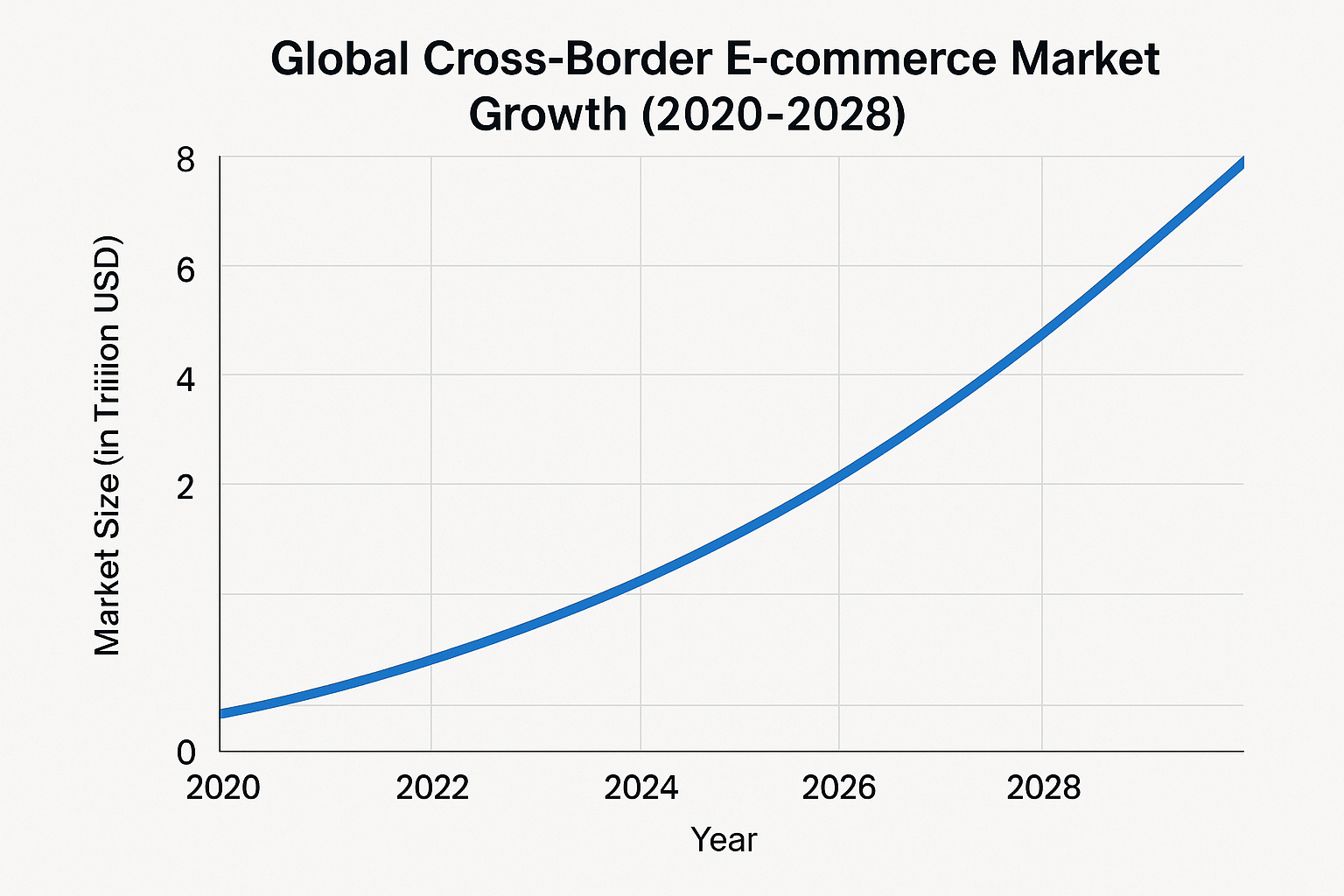
B. Core Content Models - Categorization & Breakdown
To systematically plan content, we can categorize it into three strategic types based on the marketing funnel.
2.1 Top-of-Funnel: Traffic-Attraction Content
-
Definition: This content aims to address the broad problems or interests of users in the awareness stage. The goal is to attract a large volume of new users to your website and build brand awareness, not to sell directly.
-
Pros: Wide reach, low cost for acquiring organic traffic, helps build brand authority.
-
Cons: Long conversion cycle, direct commercial ROI is not immediately obvious.
-
Use Cases: New brand market entry, expanding brand recognition, building a lead pool for future marketing.
Content Idea/Headline Examples:
-
Blog Post: "La Guida Definitiva ai 10 Migliori Sentieri Escursionistici delle Dolomiti" (The Ultimate Guide to the 10 Best Hiking Trails in the Dolomites) - For an outdoor gear brand targeting Italy.
-
TikTok/Reels Short Video: "Watch how this gadget cleans stubborn coffee stains in 15 seconds!" - For a home cleaning product targeting a global audience.
-
Infographic: "The Carbon Footprint of Your Wardrobe: A Guide to Sustainable Fashion in Germany" - For an eco-friendly apparel brand targeting Germany.
2.2 Middle-of-Funnel: Trust-Building Content
-
Definition: Once users have initial awareness, this content aims to answer their specific questions and showcase the product's professionalism and value, thereby building trust and nurturing them from visitors into potential buyers.
-
Pros: Precisely targets interested customers, effectively increases user engagement and brand affinity.
-
Cons: Requires deeper industry knowledge and product understanding.
-
Use Cases: Educating potential customers, comparing with competitors, demonstrating brand expertise.
Content Idea/Headline Examples:
-
In-depth Review/Comparison: "Comparatif : Notre Drone X1 vs. DJI Mini 3 au-dessus des Châteaux de la Loire" (Comparison: Our X1 Drone vs. DJI Mini 3 Over the Loire Valley Castles) - For a drone brand targeting France.
-
Case Study: "How a Tokyo-based Graphic Design Agency Increased Productivity by 40% with Our [Software Name]" - For a SaaS tool targeting Japan.
-
Webinar: "Live Q&A: Experts Answer Your Questions on Choosing the Right Skincare Ingredients for a Humid Climate (Singapore Focus)" - For a beauty brand targeting Singapore.
2.3 Bottom-of-Funnel: Conversion-Driving Content
-
Definition: This is the final push. Its sole purpose is to eliminate the last purchasing doubts and provide a clear reason to buy, prompting the user to complete the order.
-
Pros: Directly improves conversion rates and sales, clear ROI measurement.
-
Cons: Narrow user reach, can be perceived as overly salesy if not handled well.
-
Use Cases: Driving the final purchase decision, remarketing, increasing average order value.
Content Idea/Headline Examples:
-
Product Page: Optimize the page with localized user reviews, detailed size guides (e.g., using cm instead of inches), a clear local return policy, and estimated delivery times.
-
User-Generated Content (UGC) Showcase: Create a section on product pages and social media titled "Así lo usan nuestros clientes en México" (How Our Customers in Mexico Use It), featuring real photos and videos from Mexican users.
-
Limited-Time Offer/Bundle Page: "Oferta Exclusiva para Brasil: Compre nosso kit de café e ganhe um moedor grátis! (Válido por 48 horas)" (Exclusive Offer for Brazil: Buy our coffee kit and get a free grinder! (Valid for 48 hours)).
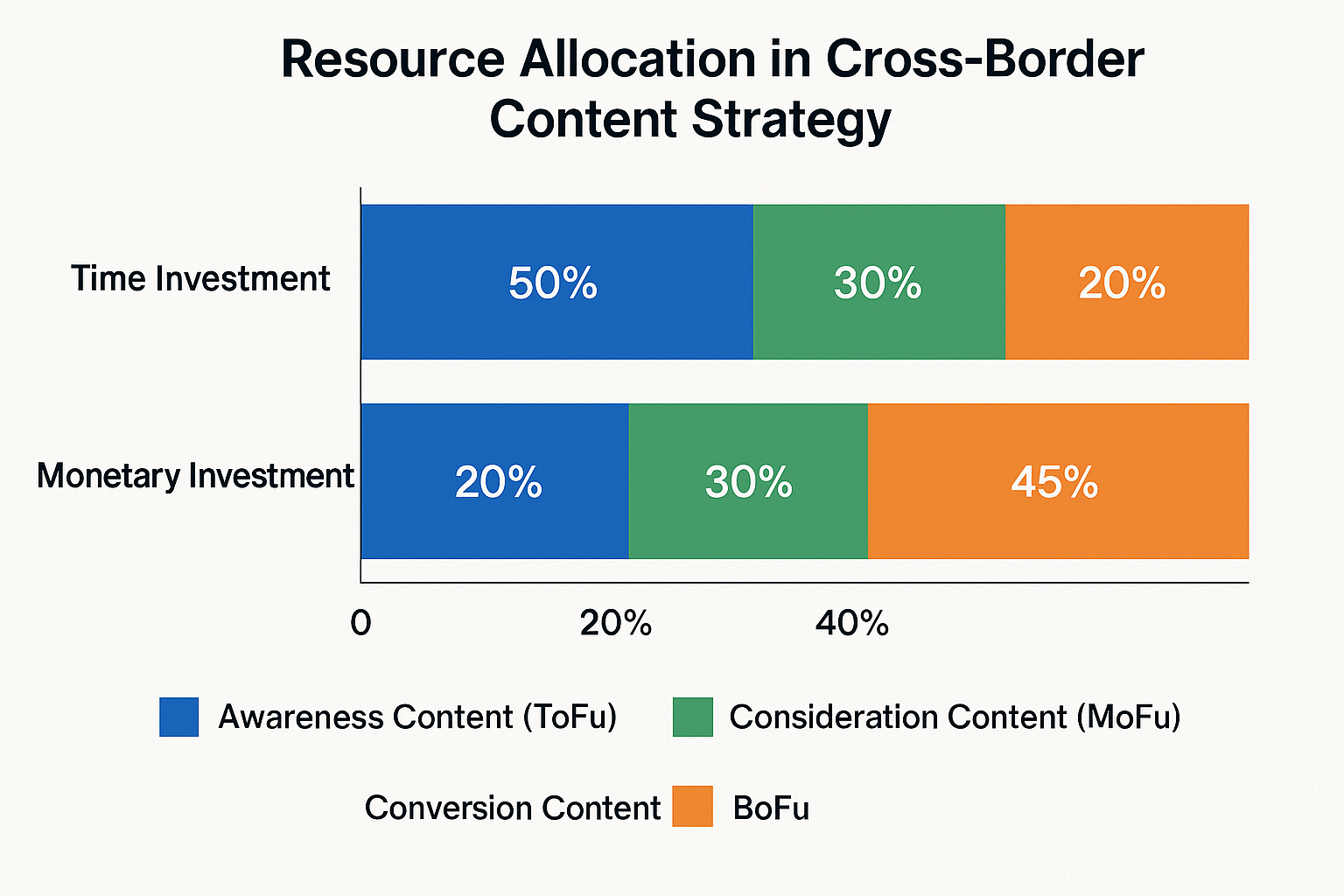
C. The How-To - Actionable Guide
Five Steps to Build an AI-Driven Content Workflow
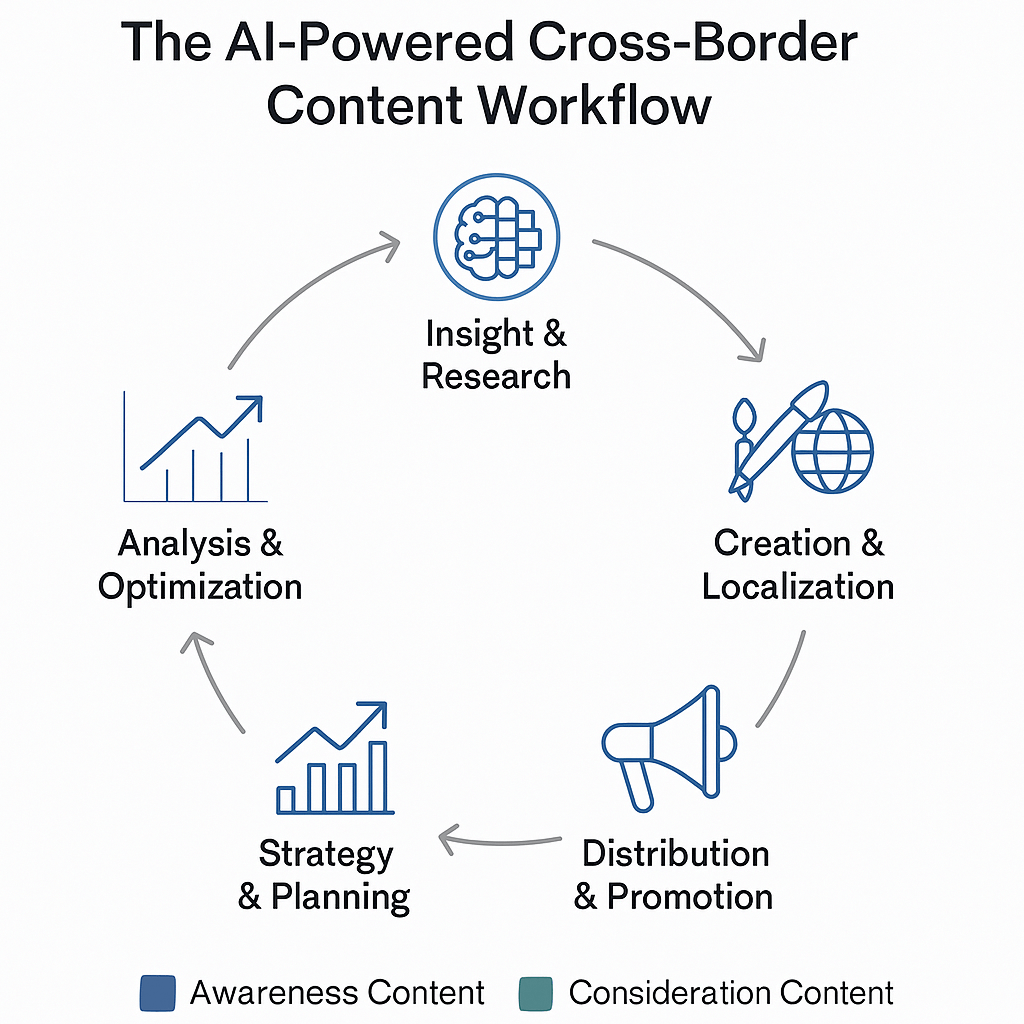
-
Action: Use AI tools (like DTCPack, SEMrush, Ahrefs) to analyze search trends, hot topics, and competitor content strategies in your target market. Scrape local forums (e.g., Reddit's r/germany), social media, and e-commerce reviews, then use NLP to extract user pain points, language habits, and cultural preferences.
-
Pitfall: Relying solely on macro tools like Google Trends and ignoring micro-insights from specific communities. The "hot topics" you find may be too broad and difficult to connect with your product.
-
Pro-Tip: Create a "Localization Persona Document" that includes not just demographics but also AI-analyzed "high-frequency pain point vocabulary," "cultural value tags," and "typical purchase decision paths." Make this document the "constitution" for all future content creation.
-
Action: Based on the insights from Step 1 and the three content models (Traffic, Trust, Conversion), plan a content calendar. Use a content matrix (X-axis: user purchase stage, Y-axis: content format) to ensure coverage at every stage of the user journey.
-
Pitfall: Publishing content randomly without a system. Writing a blog today and making a video tomorrow without a plan leads to a disjointed user journey and wasted effort.
-
Pro-Tip: Use AI predictive models to assign an "opportunity score" to each topic in your matrix based on search volume, competition, and commercial value. Prioritize creating content for high-score ideas first.
-
Action: Use advanced generative AI (like GPT-4) as an assistant for first drafts and creative ideation. Then, pass the AI-generated draft to a native-speaking marketing professional for deep optimization and cultural validation (the AI + Human-in-the-loop model). Platforms like DTCPack integrate this entire workflow.
-
Pitfall: Using machine translation tools (like Google Translate) directly for publishing. This results in stiff grammar, inaccurate terminology, and cultural inappropriateness, severely damaging your brand's professional image.
-
Pro-Tip: Create a "Brand Voice Corpus" for the AI, containing your brand values, tone guidelines, and core product terminology. By referencing this corpus, the AI can generate content that remains highly consistent with your brand voice, even across multiple languages.
-
Action: "Atomize" a core piece of content (like an in-depth blog post) into multiple formats suitable for different channels: infographics, short video scripts, social media posts, email newsletters, etc. Use AI tools to analyze the optimal posting times for each channel.
-
Pitfall: "One-post-fits-all" - copying and pasting the same content across all platforms. This ignores the vast differences in user habits and content ecosystems (e.g., professional tone on LinkedIn vs. entertaining style on TikTok).
-
Pro-Tip: Use AI content analysis tools to predict which content format is likely to get higher engagement on a specific channel (e.g., Instagram Reels vs. YouTube Shorts). This guides your content adaptation strategy and maximizes distribution efficiency.
-
Action: Integrate data from Google Analytics, social media backends, and e-commerce platforms to track key performance indicators (KPIs) like traffic, time on page, bounce rate, lead conversion rate, and final sales revenue.
-
Pitfall: Focusing only on vanity metrics like traffic and likes while ignoring the content's contribution to actual business goals (like conversion rates and customer lifetime value).
-
Pro-Tip: Use AI-driven attribution models instead of just "last-click." This more accurately assesses the true value of top-of-funnel and middle-of-funnel content in the entire user decision chain, allowing you to allocate your budget and resources more scientifically.
D. Challenges & Solutions
When implementing a cross-border content strategy, businesses inevitably face three structural challenges:
| Challenge | Traditional Approach | AI-Powered Solution (e.g., DTCPack) |
| Scale vs. Personalization | Relies on massive human resources, outsourcing, and local teams. High cost, long process, inconsistent quality. | AI Content Generation + Human Optimization: Use AI to rapidly generate SEO-ready first drafts, then have local experts culturally polish them. 10x+ efficiency boost. |
| Brand Consistency vs. Cultural Adaptation | Creates complex brand guidelines, maintained through extensive training and review. Inefficient and prone to deviation. | AI Brand Voice Engine: Digitize brand guidelines. The AI automatically adheres to brand tone and messaging while adapting to local cultural data, achieving consistency in spirit, not just in form. |
| Global SEO & Compliance Complexity | Manually research keywords, rely on external consultants for regulatory updates. Slow, risky, and expensive. | AI Real-Time Insights & Compliance Check: Continuously monitor algorithm and regulation changes, automatically recommend localized keywords, and scan content for compliance before publishing, proactively mitigating risks. |
E. Utility Toolkit
5.1 Glossary of Key Terms
-
DTC (Direct-to-Consumer): Brands selling directly to consumers without traditional distributors.
-
Localization (L10n): Adapting content beyond translation for cultural and functional suitability.
-
Internationalization (I18n): Designing a product to be easily localized.
-
Transcreation: Creatively rewriting content in the target language while preserving original intent and emotion.
-
SEO (Search Engine Optimization): Optimizing for search engines.
-
SERP (Search Engine Results Page): The page displaying search results.
-
Long-tail Keywords: Low-volume but high-intent search phrases.
-
UGC (User-Generated Content): Content created by users.
-
CTA (Call-to-Action): A prompt to induce a desired action.
-
KPI (Key Performance Indicator): A measurable value demonstrating effectiveness.
-
GDPR (General Data Protection Regulation): EU data protection law.
-
Content Matrix: A tool for planning content.
-
Persona: A fictional character representing a user type.
-
A/B Testing: Comparing two versions of a webpage to see which performs better.
-
Semantic Search: Understanding the intent and contextual meaning of search phrases.
5.2 Platform & Tool Recommendations
-
End-to-End AI-Driven Cross-Border Content Solution:
-
DTCPack (The AI Service Expert for Google DTC Sites):
-
Core Functionality: An all-in-one platform integrating market insights, AI content generation, AI reporting for DTC sites, multi-language workflow management, SEO optimization, and performance analytics.
-
Core Value: DTCPack breaks down tool silos. It integrates a fragmented workflow that previously required 5-6 separate tools into a single, seamless, AI-powered operating system. This fundamentally solves the core conflicts of efficiency, cost, consistency, and scale that cross-border brands face in content, enabling them to achieve the global reach of a multinational giant with the agility of a startup.
-
-
-
Market & SEO Research:
-
SEMrush / Ahrefs: For keyword research, competitor analysis, and rank tracking.
-
Google Trends: To identify seasonal interest and growth potential for topics.
-
-
Content Creation & Management:
-
Canva: An easy-to-use online tool for creating social media graphics, infographics, etc.
-
F. Outlook & Conclusion
The cross-border e-commerce content battlefield is on the eve of a technological revolution. The following three trends will define the next decade:
-
Hyper-Personalization at Scale: Driven by generative AI and user data analytics, future content will be created not just "for the French market," but "for Marie, the fashion lover in Paris."
-
The Rise of Generative Video: AI video generation models (like Sora) will dramatically reduce the cost and time needed to produce high-quality, localized videos.
-
Predictive Content Analytics: AI will move from "post-analysis" to "pre-prediction," forecasting the success probability of a topic or headline before it's even created.
Conclusion
We stand at the entrance to the golden age of global digital trade, and content is the only key that unlocks its gate. It is no longer an option in marketing but the very cornerstone of a brand's globalization strategy. From deep cultural insights to meticulous SEO planning, and finally to AI-driven execution at scale, building a powerful cross-border content ecosystem is the required path for any DTC brand moving from "going global" to "winning globally." This path is challenging, but with the right strategic framework and technology partner (like DTCPack), you can transform these challenges into an unparalleled competitive advantage.
Final Call-to-Action
Don't let content be the stumbling block to your global growth. Ready to elevate your cross-border content strategy to the next level? Contact the expert team at DTCPack today for a free "Content Opportunity Diagnosis" for your target market. Let us show you how AI can build an indestructible global "Content Embassy" for your brand.
[Apply for a Free Diagnosis Now]
FAQ (Frequently Asked Questions)
-
Q1: We are a startup with a limited budget. The content strategy outlined in this white paper sounds very complex and expensive. Where should we start?
A: That's an excellent question. For startups, the key is to "focus" rather than trying to do everything at once. We recommend starting with one core market and one core content model. First, use the AI insight tools mentioned in the white paper to deeply understand your most promising target market. Then, concentrate your resources on creating "Trust-Building Content" (such as in-depth blog posts, product comparisons), as this is the fastest way to establish your professional authority in a niche and attract high-quality early adopters. Once you have a stable cash flow, you can gradually expand to other markets and content types. -
Q2: Will AI-generated content be penalized by search engines like Google, affecting our SEO rankings?
A: The core of this issue is not "whether you use AI," but "how you use AI." Google has explicitly stated that it is against low-quality, valueless spam content created to manipulate rankings, regardless of whether it's written by a human or AI. The "AI + Human-in-the-loop" model advocated in this white paper uses AI as an efficiency-boosting assistant to create initial drafts, which are then deeply optimized and culturally validated by native-speaking experts. The final output is high-quality, original content that is valuable to the user. This practice is fully compliant with search engine guidelines and will not only avoid penalties but can actually improve SEO performance due to the efficient production of high-quality content. -
Q3: When hiring for our cross-border content team, should we prioritize language skills or marketing skills?
A: Both are important, but the emphasis differs. The ideal team structure is a "Local Marketing Expert + Language Polishing Expert." You need a Local Marketing Manager who truly understands the target market and can plan campaigns that resonate with the local culture. The language itself can be handled by a native-speaking Copywriter or Translator to ensure authenticity. If you have to choose only one, prioritize marketing skills and cultural insight, because a mediocre marketing idea, even if perfectly worded, will fail to move consumers. -
Q4: What is the fundamental difference between an end-to-end solution like DTCPack and buying individual tools like SEMrush and Ahrefs ourselves?
A: The fundamental difference is between an "Operating System" and a "Toolbox." SEMrush and Ahrefs are powerful "tools," but you need a professional team to operate them separately, manually integrate the data, formulate strategies, and assign tasks. The entire workflow is fragmented and reliant on human effort. A platform like DTCPack aims to be an AI-powered "Operating System." It seamlessly integrates the stages of market insight, content planning, AI creation, distribution, and performance analysis into an automated workflow. This boosts efficiency, reduces dependency on individuals, and ensures all activities are aligned with the ultimate business goal. Its core value is solving the fundamental conflict between "scale" and "efficiency" in content operations.
Legal Disclaimer: The information contained herein is for informational purposes only and does not constitute legal, business, or investment advice. Third-party tools mentioned are for illustrative purposes only and do not represent an endorsement. Market data is based on publicly available information; please conduct your own independent judgment.


